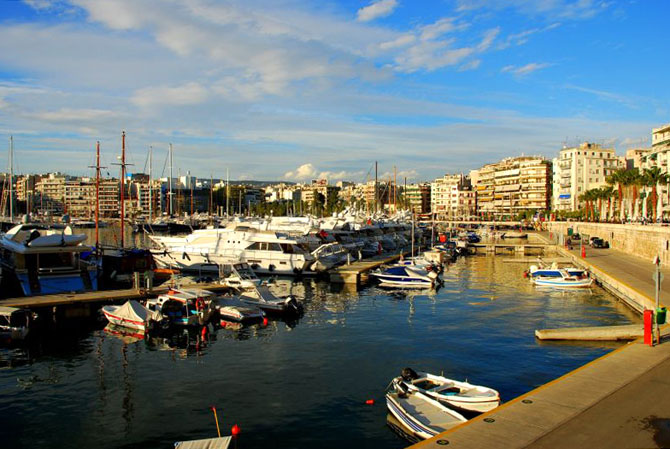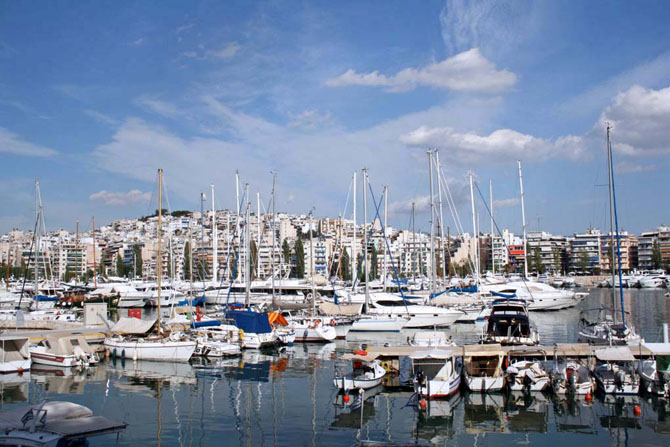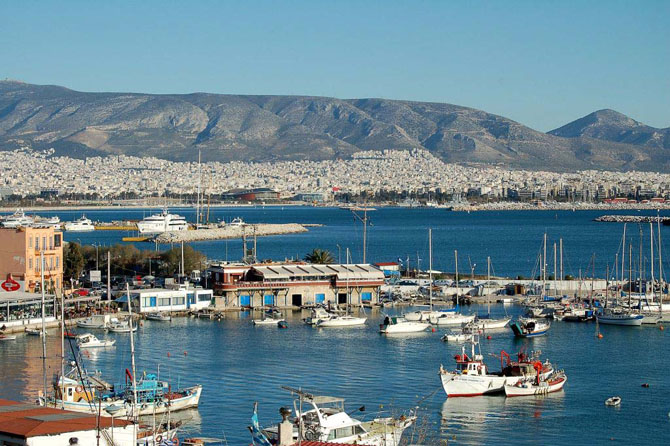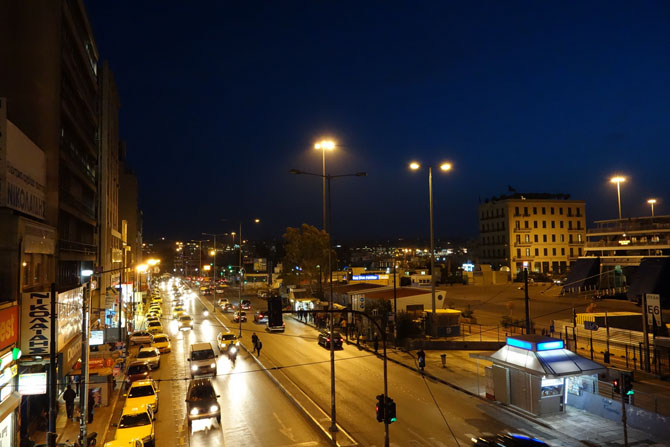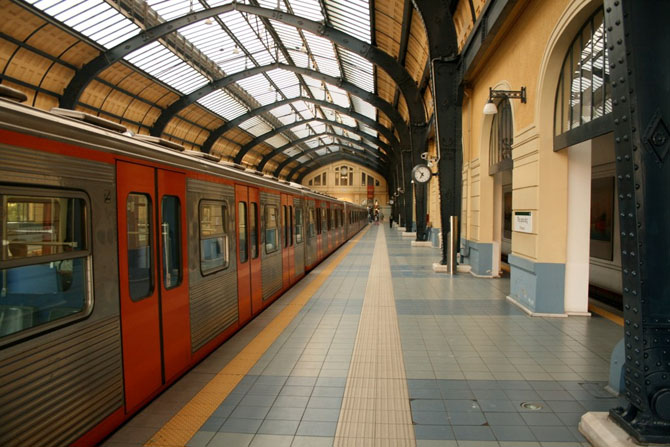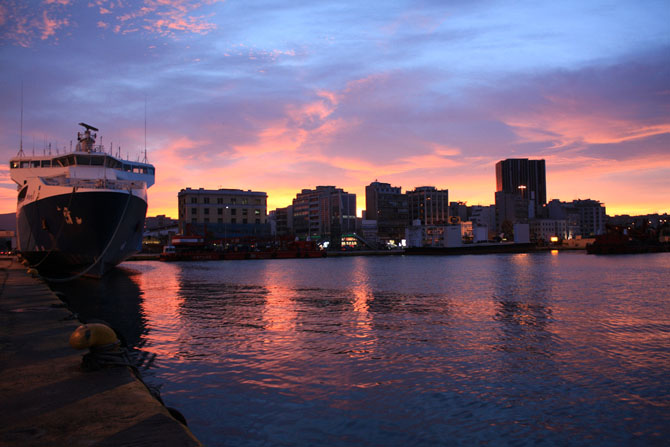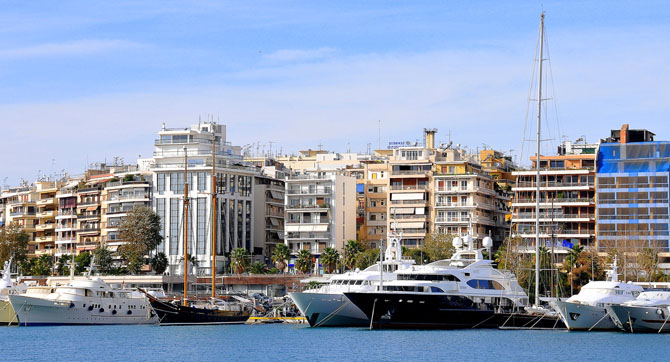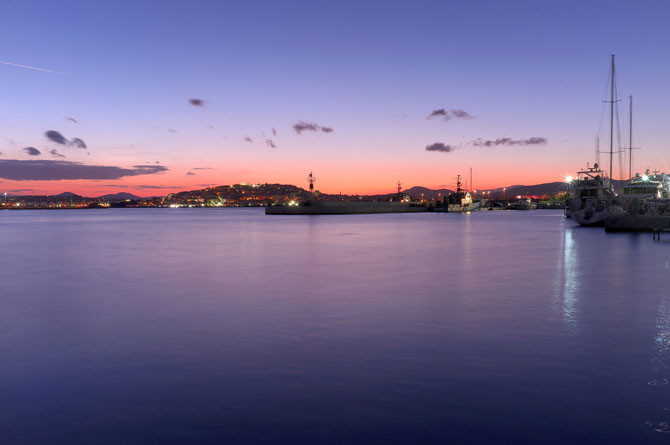The main port of Attiki and the country's largest, Piraeus has been used as a port since ancient times due to its geographical shape. It is also considered to be the largest natural harbor in Europe. Its docks have seen and been touched by all eras of Greek history. Here the farewell whenever the Athenian fleet set out; here the welcome of the ambivalent hero Alcibiades when he returned from exile; here the refugees arrived from Asia Minor following the persecution of 1922, here the islanders separate and reunite with their mainland fellows.
Due to its geographical position, Piraeus has become the largest commercial center of the Greek economy. Piraeus over the centuries has witnessed the absolute peak and the ultimate decline. Its history dates back to prehistoric times, when it was an island separated from the rest of Attiki. Inhabited since the middle of the 3rd millennium BC, its first inhabitants include, among others, the Minyes. By the 5th century BC, Piraeus had not yet been put to use by the Athenians. Its elevation was due to the extremely high interest shown by Themistocles. Under his auspices, Piraeus was fortified and developed, and flourished based upon trade that took place in the three natural harbors (Mega, Zea, Mounichia). Apart from the economic boom, the era of Themistocles was also period's peak of spiritual cultivation. Events that followed were the beginning of the decline of the erstwhile powerful Piraeus of Themistocles, culminating in the invasion of the Roman dictator Sulla, who destroyed it utterly. Then came various invaders and conquerors (Romans, Franks etc.) until 1453, when the Turks arrived. The port of Piraeus became the "Aslan Limani” (again, Lion Port) of the Turks. During the Ottoman period, the place was largely deserted. The light of renaissance comes after 1829 when major personalities with will and resources would take the reins in order to restore the glories of Piraeus. In the late 19th century, the work approached completion. Piraeus acquired one of the most innovative urban projects, public buildings to house public authorities, and a steadily growing population. Many theaters, schools, institutions etc. were built during this period and persist as area attractions even today. In recent history, Piraeus continued to evolve, with the exception of the period 1912-1922, during the period of the Balkan Wars, the First World War and the Asia Minor Catastrophe of 1922, which resulted in a huge number of refugees that suddenly the city had to accommodate. During the Second World War 1940-1944, the port and the city of Piraeus sustained incalculable damage due to the massive bombings. From 1945 onwards, after the wartime losses were restored, redevelopments began which continue to this day. Piraeus may not be much of an attraction for tourists, serving principally as a starting point for Greek island destinations, yet the celebrated port combines the modern with the classic that can be observed in many corners. A lunch of seafood overlooking the Saronic Gulf is definitely enjoyable.
Use the map or the alphabet below to find your favorite destination!
Achaea Prefecture
Aegina
Aetoloakarnania Prefecture
Agathonisi
Agistri
Alonissos
Amorgos
Anafi
Andros
Antiparos
Arcadia Prefecture
Argolida Prefecture
Arta Prefecture
Astypalea
Attiki Prefecture
Kalymnos
Karditsa Prefecture
Karpathos
Kasos
Kastelorizo
Kastoria Prefecture
Kavala Prefecture
Kea (Tzia)
Kefalonia
Kerkyra (Corfu)
Kilkis Prefecture
Kimolos
Korinthia Prefecture
Kos
Koufonisi (Ano & Kato)
Kozani Prefecture
Kythira - Antikythira
Kythnos
Samos
Samothrace
Santorini
Schinoussa
Serifos
Serres Prefecture
Sifnos
Sikinos
Skiathos
Skopelos
Skyros
Spetses
Symi
Syros
Would you like to combine skiing in the morning and then go swimming in the afternoon, all in one region? Click to choose your interests and see in which part of Greece you enjoy them. Combinations are endless!












